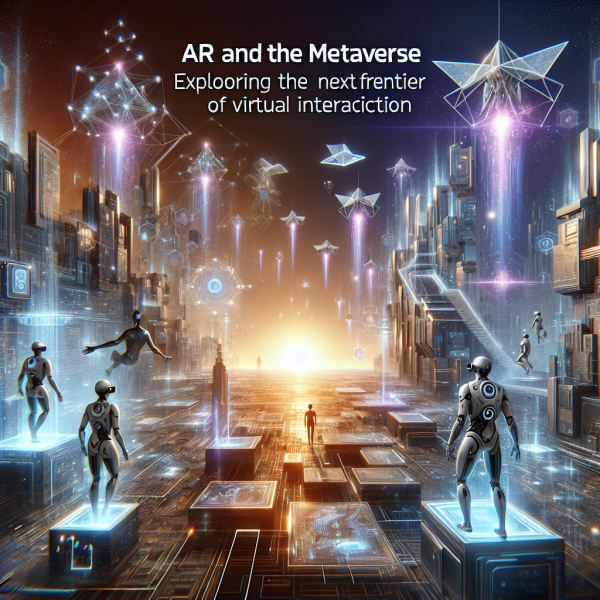Exploring Quantum Cryptography: Enhancing Security in a Digital Age

In an increasingly interconnected world, the need for robust security measures to protect sensitive information has never been greater. From personal data to national security secrets, the threats posed by cyberattacks are pervasive and evolving. In this context, quantum cryptography emerges as a revolutionary technology poised to redefine the landscape of digital security.
Understanding Quantum Cryptography
At its core, quantum cryptography leverages the principles of quantum mechanics—the branch of physics that deals with the behavior of particles at the atomic and subatomic levels—to create secure communication channels. Unlike traditional cryptographic methods, which rely on mathematical algorithms that can be broken with sufficient computing power, quantum cryptography offers a fundamentally more secure approach.
The most well-known protocol in quantum cryptography is Quantum Key Distribution (QKD). QKD allows two parties to generate a shared, secret key that can be used for encrypting and decrypting messages. This key is secured through the laws of quantum mechanics, specifically the concept of quantum superposition and entanglement.
The Principles of Quantum Security
-
No-Cloning Theorem: One of the cornerstone principles of quantum mechanics is that it is impossible to create an exact copy of an unknown quantum state. In practice, this means that if an eavesdropper attempts to intercept the quantum key, the act of measuring it will alter its state, alerting the communicating parties that their conversation has been compromised.
-
Quantum Entanglement: Quantum entanglement occurs when two or more quantum particles become interconnected in such a way that the state of one particle is dependent on the state of another, regardless of the distance between them. This characteristic can be utilized for secure communication, allowing parties to detect any interference or eavesdropping attempts.
- Uncertainty Principle: The Heisenberg Uncertainty Principle states that certain pairs of physical properties, like position and momentum, cannot both be measured precisely at the same time. This randomness is exploited in quantum key generation, ensuring that any interception or measurement introduces detectable anomalies.
Applications of Quantum Cryptography
1. Banking and Financial Services
The financial sector handles massive volumes of sensitive data, making it a prime target for cyberattacks. Quantum cryptography can enhance security for online transactions, ensuring that customer information and transaction details remain confidential. Institutions using QKD and quantum-based encryption can create safer digital banking environments, instilling greater consumer trust.
2. Government and Military Communications
National security is paramount for governments worldwide. Quantum cryptography can secure communications among military personnel, intelligence agencies, and government officials, significantly reducing the risk of espionage and cyber infiltration. With quantum technology, critical national data can be protected against even the most sophisticated adversaries.
3. Healthcare Data Protection
As healthcare systems become more digitized, the protection of patient data is essential. Quantum cryptography offers a secure means for sharing sensitive medical records and health data, mitigating risks associated with data breaches that could lead to identity theft or insurance fraud.
4. Cloud Computing Security
As more organizations turn to cloud solutions for data storage and processing, the need for secure communication channels becomes crucial. Quantum cryptography can enhance data security in cloud environments, allowing businesses to transmit data securely without fear of it being intercepted during transfer.
Challenges and Future Perspectives
While the potential of quantum cryptography is significant, several challenges remain before it can be widely adopted:
-
Infrastructure Costs: Implementing quantum cryptography requires specialized hardware and infrastructure, which can be costly. For many organizations, the investment necessary to switch from traditional cryptographic methods may be a barrier.
-
Standardization: The field of quantum cryptography is still evolving, and the lack of universally accepted standards poses difficulties for interoperability among different systems.
- Limited Range: Current QKD protocols have distance limitations, often requiring the use of trusted nodes for long-distance communication. Overcoming these challenges will be critical for broader implementation.
Despite these challenges, investments in quantum technology and research continue to increase. Governments, academic institutions, and private enterprises are committed to advancing quantum cryptography as a definitive solution for secure communication.
Conclusion
As we navigate the complexities of an ever-changing digital landscape, quantum cryptography represents a watershed moment in cybersecurity. With its potential to safeguard sensitive information, it holds the promise of a future where secure communication is not just an aspiration but a reality. While the road to widespread acceptance is still under construction, the journey toward quantum-enhanced security is one that promises to reshape the way we think about data protection in the digital age. As awareness grows and technologies mature, quantum cryptography may very well be the cornerstone of the next generation of information security.













